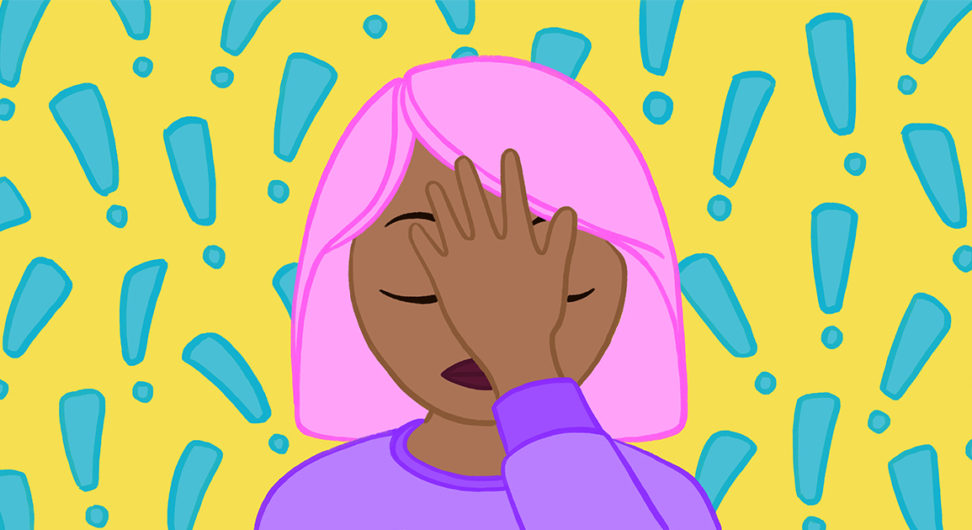Creative Briefs #4: The Fine Art of Oomph
Haley enjoyed transcending the make-it-pretty misperception of Marketing and providing the sales team with polished, professional collateral that delivered more than what they’d asked for. Even if it wasn’t a verbatim execution of their request, she liked to believe that they recognized and appreciated the upgrade. Such dreamy reveries lasted from the moment she hit “Send” until the salesperson replied with some variation on, “Do you have time for quick call?”
Today, that duration was six minutes.
“Looks great, Haley,” the sales guy said enthusiastically. “Just a couple of little tweaks. The headline doesn’t have the exclamation points anymore, and it kinda loses the oomph without them. I know there’s no room as-is, but I think if you reduce the font size, they’ll fit no problem.”
Had this been a video call, Haley would have struggled to hide the look of incredulity that immediately hijacked her face. Did he really think that the absence of the requested characters was due to Haley’s inability to toggle the font-size drop-down? Or was implying her incompetence his idea of a clever angle for renegotiating his requested punctuation?
Haley explained that an exclamation point, while quite capable of perking up an invitation to a backyard luau party, was less effective in a description of professional services. Lest the sales guy think this was merely a matter of personal taste, she cited F. Scott Fitzgerald’s assertion that using an exclamation point is like laughing at your own joke. Fitzgerald’s comment, she added, was in reference to a single instance of such punctuation, and he would likely have been three times more adamant about the three exclamation points included in the draft.
“Huh.” There was a pause that Haley chose not to fill. “Anyway, I’d like to put the emphasis back on the key phrases I highlighted in the version I sent.”
In fact, the emphasis on the requested words was quite clear, as the body font was 45 Light and the highlighted words were 75 Bold. It was obvious even at a glance. What was different from the supplied draft was that those highlighted phrases were no longer in all caps. Had she been explaining it in email, she would have POINTED OUT that SWITCHING between ALL CAPS and sentence case MADE it hard to FOCUS on the content. But on the phone, she relayed the well-known axiom that typing in all caps is like yelling at someone, and writing that featured such outbursts suffered a sort of visual Tourette’s Syndrome. The bolding provided the emphasis he’d requested without distracting from the rhythm of the overall message.
“Hmmm. Again, I feel like it lost some of the oomph I was looking for.”
Haley referenced the parade of improvised email signatures that littered her inbox every week. Had he ever imagined a sender as more approachable because their name appeared in Comic Sans? Would he change his mind about the content if the company tagline appeared in Roy G Biv? She did her best to tactfully explain that in a text-heavy sales piece, playing tricks with the text wasn’t the right path for providing so-called oomph. She’d tried to avoid saying the last word sarcastically but wasn’t certain she’d succeeded.
“I guess we’ll have to agree to disagree on that. So if you could just replace the stock photo with the graphic I sent, we’ll give it a shot. The other image is more of a grabber.”
She remembered his graphic, mostly because it was so uncommon to see clipart in a corporate environment. She couldn’t remember the details – was it a leprechaun, or just a man in a top hat? And was it coins or bills in the wheelbarrow? Either way, it certainly had grabbed her team’s attention. Haley wanted to point out that the graphic had no logical connection to the content of the piece. She wanted to inform him that Lois had threatened to kill her, and him, if that pixelated munchkin was granted residence on any collateral other than a cocktail napkin. But she was tired of explaining what seemed obvious, so instead cited the Brand Standards doc, page six, use of cartoons and clipart in company communications is not permitted. Consult with Marketing for alternatives. She offered to forward him the document.
“No, we need to get it out the door. I guess we’ll go with this, and we’ll know who’s right when we see how many leads I get out of it.”
Haley loved this logic – the sales guy chooses the prospects, pesters them at an unknown frequency, and improvises his pitch based on little more than the prospect’s LinkedIn profile. If he doesn’t convert them into clients, the problem must be a lack of all caps and emphatic punctuation in a single piece of collateral.
When she hung up the phone, Lois leaned toward her desk. “I’m not putting that Monopoly Man back in there, Hale-stone.”
Haley did her best impersonation of the facepalm emoji.
This work is licensed under a Creative Commons Attribution-ShareAlike 4.0 International License.


